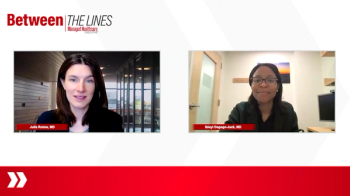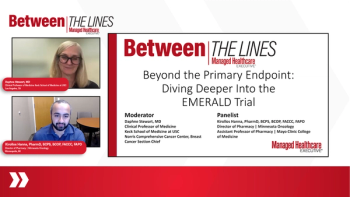
Therapies Used in Inadequate Responders to Statins
An expert discusses how nonstatin therapies serve as essential tools when patients can’t tolerate statins or need additional LDL cholesterol-lowering agents. These include ezetimibe (a cholesterol absorption inhibitor), bempedoic acid (a liver-specific prodrug) and PCSK9-interfering therapies (both injectable monoclonal antibodies and inclisiran), with treatment selection based on patient comorbidities, cardiovascular risk level and specific LDL cholesterol targets.
Episodes in this series

Therapies for Inadequate Statin Responders
Clinical Presentation and Available Nonstatin Therapies
When patients cannot tolerate adequate statin therapy or require additional LDL cholesterol reduction, several nonstatin options are available. Ezetimibe serves as the foundational add-on therapy, functioning as a cholesterol absorption inhibitor that blocks dietary cholesterol uptake in the intestine and prevents bile acid reabsorption in the liver, achieving approximately 20% LDL cholesterol reduction. Bempedoic acid represents a newer oral option, designed specifically for statin-intolerant patients. As a prodrug activated only in the liver, it minimizes muscle-related side effects while providing 25% LDL reduction when used alone or 15% when combined with statins. PCSK9-interfering therapies include both monoclonal antibodies (administered subcutaneously every 2 weeks) and small interfering RNA (inclisiran, given twice yearly in-clinic), both targeting the PCSK9 protein to enhance LDL receptor function and achieve approximately 50% LDL cholesterol reduction.
Assessment and Patient Selection Criteria
Treatment selection requires comprehensive evaluation of multiple factors including prevention status, comorbid conditions, and specific cardiovascular risk markers. Secondary prevention patients with established cardiovascular disease require more aggressive LDL targets (typically
< 70 mg/dL, or < 55 mg/dL with additional risk factors). Key considerations include presence of diabetes, chronic kidney disease, elevated lipoprotein(a), and inflammatory markers such as high-sensitivity C-reactive protein (hs-CRP). Patients with multiple risk factors may require combination therapy to achieve target goals. For example, a secondary prevention patient with baseline LDL cholesterol of 140 mg/dL may need a statin plus ezetimibe plus PCSK9 inhibition to reach targets below 55 mg/dL, potentially reducing levels from 70 mg/dL to 35 mg/dL with combination therapy.
Treatment Strategy and Combination Approaches
Therapeutic approach should be individualized rather than following a uniform stepwise progression. Although ezetimibe often serves as first-line add-on therapy, the presence of elevated inflammatory markers, lipoprotein(a), or other specific risk factors may warrant different initial combinations. Triple or quadruple therapy may be necessary for high-risk secondary prevention patients, particularly those with persistent inflammation despite statin therapy. Both ezetimibe and bempedoic acid demonstrate anti-inflammatory effects beyond LDL lowering, making them valuable additions when hs-CRP remains elevated. PCSK9 therapies, while highly effective for LDL reduction, do not address inflammation, necessitating combination approaches. Patient education regarding the rationale for multiple medications is crucial, emphasizing that preventing recurrent cardiovascular events justifies the comprehensive therapeutic approach required to address both cholesterol levels and residual inflammatory risk.
Newsletter
Get the latest industry news, event updates, and more from Managed healthcare Executive.





















































